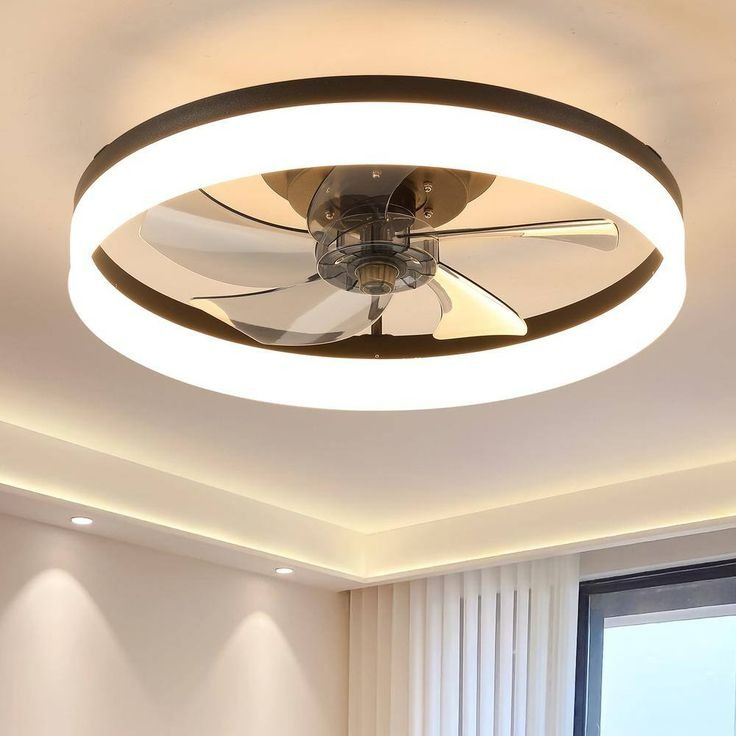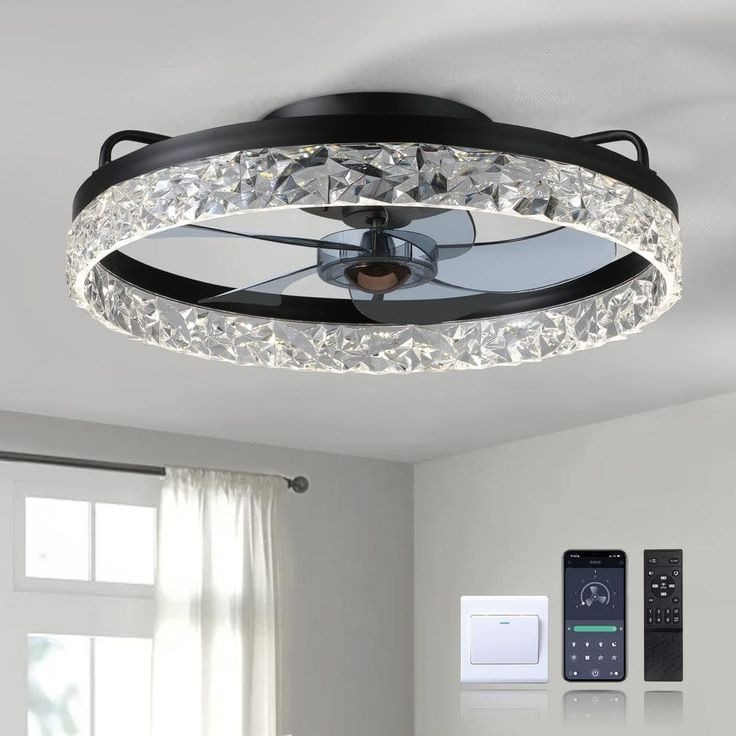What is a Smart Fan and Light Switch
A smart fan and light switch is a modern solution for home lighting and ventilation. It lets you control your fan and lights from one device. Using Wi-Fi or a home network, these switches connect to various smart systems. This allows for remote control via smartphones or voice commands. Unlike traditional switches, a smart fan and light switch adds convenience and energy efficiency to your home. It can be part of a smart home system, working with other devices for a seamless experience. Its features often include scheduling, dimming, and speed control.
With a smart switch, you upgrade your home to be more responsive to your lifestyle needs. It’s like having a personal assistant for your fan and lighting systems. Integrating this technology helps create a more comfortable and customizable living environment.

Benefits of Integrating Smart Fan and Light Switches
Integrating smart fan and light switches into your home offers numerous advantages. First and foremost, they provide unmatched convenience. You can control fans and lights from anywhere. Whether you’re in another room or miles away, your home’s lighting and ventilation obey your commands. Smart switches mean no more fumbling for a light switch in the dark or reaching for a fan’s pull chain.
Energy efficiency is another major benefit. These devices allow you to schedule when your lights turn on and off. They also adjust fan speeds to suit your comfort level. This targeted usage reduces excess energy consumption, which can lower your utility bills. You make your home eco-friendlier by cutting down waste.
Smart switches enhance home safety as well. You can simulate occupancy by programming lights to switch on while you’re away. This deters potential intruders, making it look like someone is always home. Additionally, voice-activated control offers safety. You keep your hands free, avoiding hazards while cooking or doing tasks.
They also bring an aspect of modernization to your living space. Smart fan and light switches have sleek designs. They blend with any home aesthetic and contribute to a contemporary look. By updating your home with these gadgets, you increase its value. Tech-savvy buyers value such enhancements if you ever decide to sell.
Lastly, smart switches offer a level of personalization that traditional switches can’t. You can set scenes for activities like reading or dining. You create ambiances that cater to your mood and activity, all from your smartphone or voice command. The integration of smart switches truly makes your home adapt to your lifestyle.
Pre-installation Considerations
Before you start the installation of your smart fan and light switch, there are several factors to consider. These pre-installation checks ensure that the integration goes smoothly and safely.
- Check Your Electrical Wiring: Your home’s existing wiring is crucial. You need a neutral wire for most smart switches. If you’re unsure, consult an electrician.
- Ensure Wi-Fi Coverage: The switch needs a strong Wi-Fi signal. Check the Wi-Fi strength in the switch location. You may need a Wi-Fi extender.
- Compatibility with Your Fan and Lights: Verify that your fan and light are compatible. Look up the models online or check with the manufacturer.
- Assess Wall Space: Smart switches may be larger than traditional ones. Ensure you have enough space on your wall for installation.
- Gather Tools and Equipment: Get a screwdriver, wire stripper, and voltage tester. Check if other tools are needed based on the switch model.
- Turn Off the Power: Always turn off the circuit breaker for safety. Use a voltage tester to confirm the power is off before you start.
- Understand Your Switch: Read the manual. Know how your smart fan and light switch operates before you install it.
Take your time to go through each of these points carefully. Proper preparation will lead to a better installation experience.

Step-by-Step Installation Process
Installing a smart fan and light switch can be straightforward if you follow each step carefully. Here’s a detailed guide to help you through the process from start to finish.
- Turn Off the Power: To ensure safety, cut off the power supply at the circuit breaker.
- Remove Existing Switch: Unscrew the faceplate and switch. Carefully pull out the switch from the wall.
- Inspect Wires: Identify the wires connected to the old switch. Look for the neutral wire, typically white.
- Connect Smart Switch: Following the manual, connect the wires to the new smart switch. Some designs have straightforward push-in connections, while others need wrapping around screws.
- Secure the Switch: Mount the smart switch back into the wall. Tighten screws to hold it in place.
- Attach the Faceplate: Snap or screw on the new faceplate that comes with the smart switch.
- Restore Power: Turn the power back on at the circuit breaker.
- Test the Switch: Check the smart switch by manually turning on the fan and lights.
- Set Up with Mobile App: Connect the switch to your mobile app. Follow the app’s instructions for setup.
- Calibrate Switch: Adjust settings in the app to match your fan and lights.
Take your time and proceed with caution at each stage. If you encounter issues, refer to the troubleshooting section or seek professional help. Remember, every step brings you closer to enjoying the convenience of your smart fan and light switch.
Configuring Smart Fan and Light Switches with Mobile Apps
After installing your smart fan and light switch, configuring it with a mobile app is the next step. This process connects the switch to your home network and smart device, allowing control through your phone.
First, download the brand’s app provided by your switch manufacturer. It’s usually available on both iOS and Android platforms. Open the app and create an account if you don’t have one. Next, add your new smart switch to the app. This involves selecting ‘Add Device’ and following the on-screen instructions.
The app may ask to access your Wi-Fi details. Ensure you’re connected to a 2.4GHz network, as most smart switches don’t support 5GHz networks. Once connected, you can name your switch to identify it easily, such as ‘Bedroom Fan’ or ‘Kitchen Lights’.
The app will offer customization options. You can schedule your devices to turn on or off at specific times. For instance, set your bedroom lights to dim at bedtime. Or program the fan to switch on before you arrive home. You can also adjust settings to control the speed of your fan or the brightness of your lights.
Lastly, check if the app has firmware updates. Manufacturers release updates to improve performance and add features. Keeping your device updated ensures it works smoothly with your home network.
By following these steps, you’ll leverage the full potential of your smart fan and light switch through the convenience of your mobile device.

Smart Home Automation and Voice Control Compatibility
Making your home smarter, a smart fan and light switch easily ties into home automation systems. The compatibility with home automation means you can blend the switches with other smart devices. This integration delivers a hands-free experience that simplifies your daily routine.
Home Automation Systems
To integrate, ensure that the switch is compatible with your smart home ecosystem. Popular systems, such as Amazon Alexa or Google Assistant, work well with most smart switches. Once linked, managing your fan and lights becomes part of your home’s connected network.
Voice Control Setup
For voice control, pair your smart switch with a voice assistant device. Use clear voice commands to control your lighting and ventilation. Say phrases like ‘Turn on bedroom fan’ or ‘Dim living room lights’. With voice commands, you can control your environment without lifting a finger.
Setting up voice control may involve a few steps in the assistant app. Follow instructions for a smooth setup. After linking, you can control settings with your voice. Ask the assistant to change fan speed or light intensity.
Advantages of Voice Control
Voice control brings ease and accessibility to managing your home. It’s helpful for individuals with mobility issues. Also, it provides convenience when your hands are full. Simple voice commands make light and fan operation effortless.
By completing these steps, your smart devices offer full automation and voice control. Enjoy the enhanced convenience and comfort of your smart home.
Troubleshooting Common Issues
When integrating a smart fan and light switch, you may encounter some common issues. Here’s how to troubleshoot them effectively.
- Device Not Responding: Ensure the switch is powered and connected to Wi-Fi. Check the circuit breaker and wiring.
- Connection Drops: Strengthen your Wi-Fi signal with an extender. Verify your router settings and restart the switch.
- App Doesn’t Recognize the Switch: Confirm your phone is on the same Wi-Fi network. Update the app or reinstall it.
- Voice Commands Not Working: Re-link your switch to the home automation system. Check for typos in device names.
- Lights or Fan Not Operating Correctly: Confirm if the switch is compatible with your devices. Consult the manual for the right settings.
- Schedule Not Functioning: Review your app settings. Make sure you have saved the schedules correctly.
When issues arise, stay calm and work through them step by step. If problems persist, contact customer support for your smart switch for further assistance.
Best Practices for Maintenance and Updates
Maintaining your smart fan and light switch ensures long-term performance and reliability. Follow these best practices to keep your smart devices in top condition.
- Regular Firmware Updates: Check for updates in the mobile app. New firmware can fix bugs and add features.
- Routine Device Checks: Inspect your switch periodically. Make sure it’s clean and free from dust.
- Wi-Fi Stability: Always have a stable Wi-Fi connection. Upgrade your router or use extenders for a strong signal.
- Battery Replacement for Remotes: If your switch has a remote, change the batteries yearly.
- Smart Home System Sync: Re-sync devices if you make changes to your network or home automation system.
- App Functionality Testing: Try all features in the app to ensure they work as expected.
- Voice Assistant Reconnection: Regularly test voice commands. Reconnect your voice assistant if commands fail.
Ensuring these steps can minimize interruptions and maintain ease of use. With proper maintenance, your smart fan and light switch will continue to add convenience and efficiency to your home.